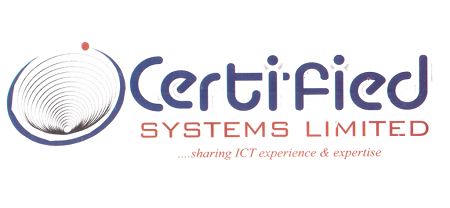Automated Firearm Identification
The Integrated Ballistic Identification System (IBIS) offered by Forensic Technology is a cutting-edge solution for firearm and tool mark identification. This advanced system facilitates the sharing, comparison, and automated identification of significant quantities of exhibit information and images across a network of imaging sites. The latest generation of IBIS technology boasts exceptional 3D imaging, advanced comparison algorithms, and a robust infrastructure. It’s designed to meet the needs of police and military organizations, providing actionable information derived from firearms and their fired ammunition components.
Blood Pattern Analysis Software
Bloodstain pattern analysis (BPA) software is an emerging technology in forensic science that seeks to reconstruct crime scenes by analyzing blood and bloodstains. This computer-based software can estimate the Area(s) of Origin (AO) of a bloodletting event, providing crucial insights into the sequence of events at a crime scene. However, according to a study published in “Forensic Science International,” only two validation studies have involved impact patterns created more than 1 meter from the main target surface. Furthermore, using BPA software in actual criminal cases is not well documented. Thus, while promising, this technology requires further research and validation to ensure it meets the rigorous standards required for court admissibility.
Mass Spectrometry Techniques
The paper published in the Journal of Analytical Methods in Chemistry presents an advanced technique for identifying and quantifying synthetic cannabinoids using liquid chromatography-tandem mass spectrometry (LC-MS/MS). This technology, which contributes to forensic toxicology, offers high selectivity and sensitivity, making it an invaluable tool for analyzing complex biological samples. Synthetic cannabinoids, often referred to as ‘Spice’ or ‘K2’, are a significant challenge in drug abuse due to their structural diversity and continually changing compositions. The LC-MS/MS method developed can simultaneously identify and quantify 24 synthetic cannabinoids in urine, making it a potent tool in testing for the presence of cannabis in humans.
Sensitive Detection Methods
Sensitive detection in the field of medicine and dentistry refers to the use of advanced technologies to detect minute amounts of specific substances or changes in the body. This is crucial for early diagnosis, monitoring disease progression, and assessing the effectiveness of treatment. Techniques like mass spectrometry, fluorescence detection, and molecular imaging are commonly utilized for sensitive detection. For instance, mass spectrometry has become an invaluable tool in clinical laboratories due to its high sensitivity and specificity for identifying biomarkers and drugs. Similarly, fluorescence detection methods are widely used in biological research and medical diagnostics for their high sensitivity and non-invasive nature.
Omics Techniques
The use of omics techniques in forensic entomology, as discussed in an article published in “Forensic Science International”, represents a significant advancement in the field. These techniques, which include genomics, transcriptomics, proteomics, metabolomics, and microbiome analysis, allow for a comprehensive and systematic study of biological samples. In the context of forensic entomology, they are used for species identification, phylogenetics, and screening for developmentally relevant genes, among other applications. They also play a crucial role in interpreting the behavioral characteristics of species related to forensics at the genetic level.
Carbon Dot Powders
Fingerprints are essential for analyzing many crime scenes. However, there are many reasons why it may be hard to see one clearly, including low sensitivity, low contrast, or high toxicity.
Researchers have developed a fluorescent carbon dot powder that can be applied to fingerprints, making them fluorescent under UV light and subsequently much easier to analyze. With this new application, fingerprints will glow red, yellow, or orange.
Artificial Intelligence
While artificial intelligence (AI) has been used in many other fields for decades, it is relatively new to forensic science. This is primarily because all evidence and the analysis must stand up in court. However, recent advancements have seen AI utilized successfully in all forensic components of a criminal case. While AI is most often used in digital forensics, it is increasingly used to analyze a crime scene, compare fingerprint data, draw conclusions from photograph comparisons, and more.
Nanotechnology
Atomic and molecular technology are finding their way into forensic science. Analyzing forensic materials at this minute level can offer scientists insights that previously weren’t accessible.
Nanosensors are being utilized to examine the presence of illegal drugs, explosive materials, and biological agents on the molecular level. Specific advancements this past year have included scientists’ ability to analyze the presence of carbon and polymer-based nanomaterials to make their determinations and aid investigators.
Proteomes
Forensic scientists have traditionally relied heavily on DNA to determine a suspect or victim. However, advances in detecting and identifying proteins have made proteomes an essential forensic science tool. Proteomes are a complete set of proteins produced by an organism.
Scientists can find proteomes in blood, bones, and other biological materials and analyze them to find answers, such as if a victim came in contact with an otherwise undetectable venom or matching a severely degraded body fluid sample to a perpetrator. One aspect of proteomes that differs from DNA is that they change over time, offering scientists valuable insights into a victim’s age or other environmental factors at the time of death that are impossible to detect through other methods.
Foldscope
The Foldscope is a small, disposable, inexpensive paper microscope that has been around since 2014. However, just recently, it has found its way from third-world country applications into the world of forensic science. Due to its portability and low cost, the Foldscope can be used in the field to make on-the-spot determinations about forensic samples, including blood, hair, and soil.
While the conclusions drawn with Foldscope are only preliminary, they can aid law enforcement early on in an investigation and speed up the discovery process. Using a Foldscope in the field can also lighten the load for forensic laboratories, which are often backlogged and can take significant time to deliver results.

